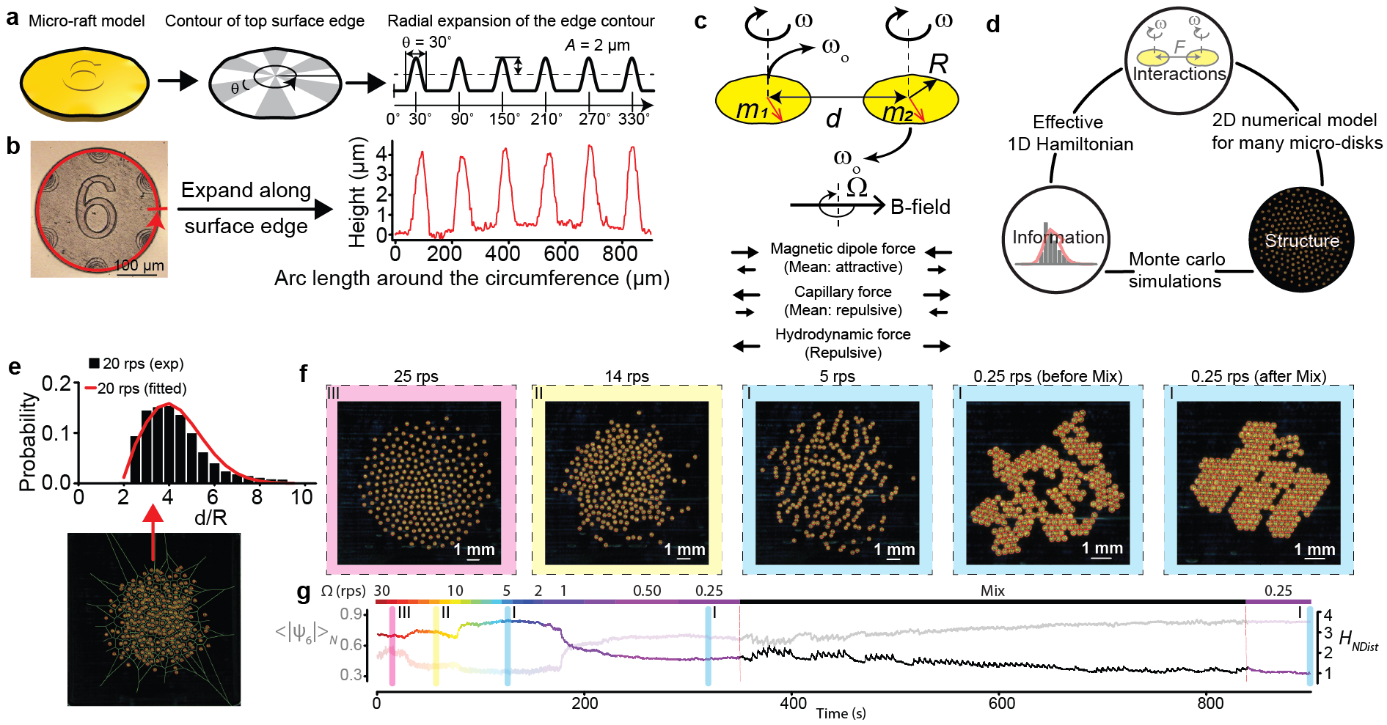Information entropy to detect order in self-organizing systems

The application of the Shannon entropy to study the relationship between information and structures has yielded insights into molecular and material systems. Despite gaining valuable insights for such systems, much remains to be learned about the relationship between the abstract notion of information and its concrete manifestation in a structure. Using a model collective system, we seek to develop an information theoretic tool to detect order and relate it to the information content in the diverse patterns formed by equilibrium and non-equilibrium systems.
We use a self-organizing system made of hundreds of magnetic 300 μm-diameter micro-disks spinning at the air-water interface, as a model system []. We design an intricate balance between the three main pairwise interactions in the system: capillary, magnetic dipole-dipole and hydrodynamic interactions. We seek to understand the relation between these mutual interactions, the structure, and the information contained in the diverse patterns formed by our system. The micro-disks can assemble into patterns with varying degree of order: hexatic-like, disordered and crystal-like ordered patterns and we can transition between these patterns by tuning the spinning speed of the external uniform rotating magnetic field. We have developed an information theoretic measure to quantify the degree of order in these patterns using the distribution of the neighbor distances. Intuitively, lower value of this measure means more order in the pattern. We anticipate that such measure will be useful for detecting self-organization in systems at different length scales, including cells, animals, humans, and robots, and that our experimental system could serve as a model system for testing non-equilibrium hypothesis.
Members
Publications


